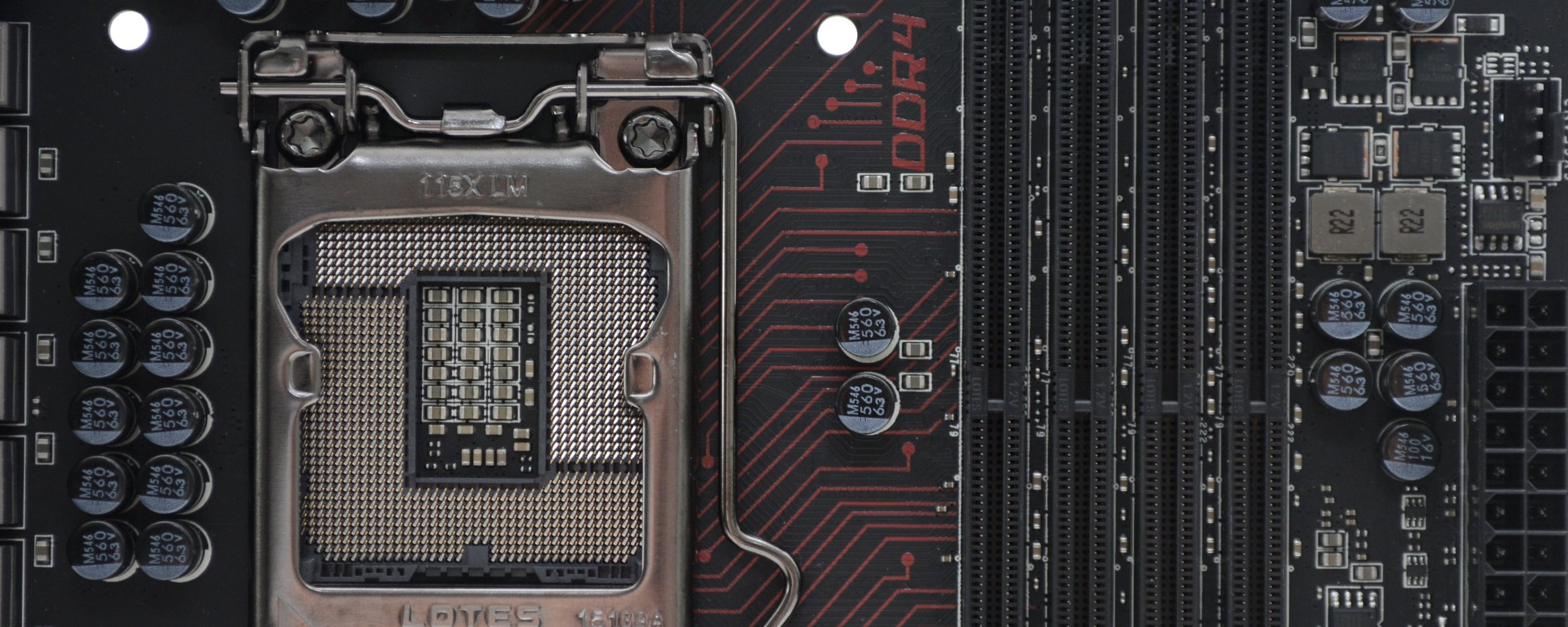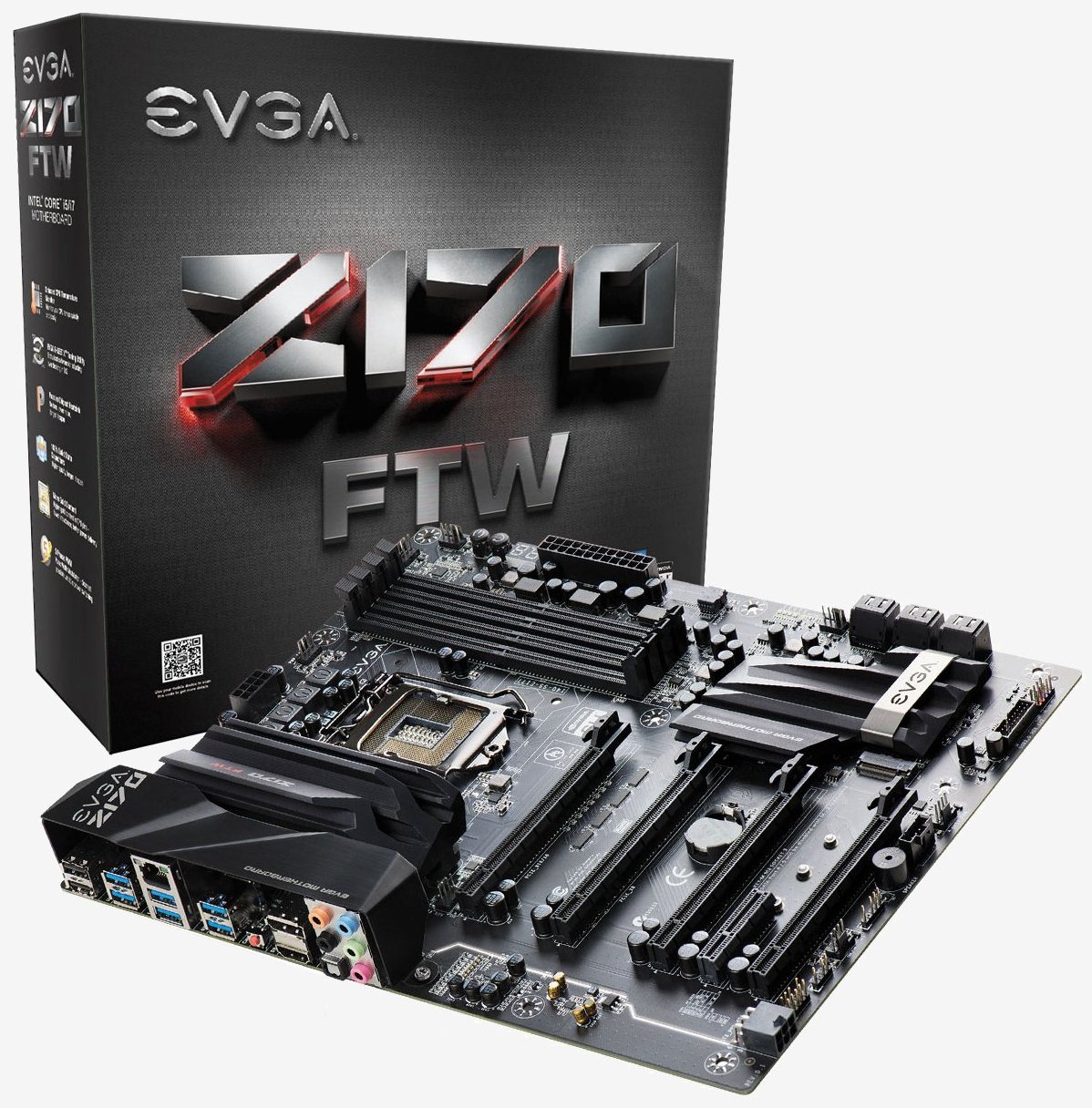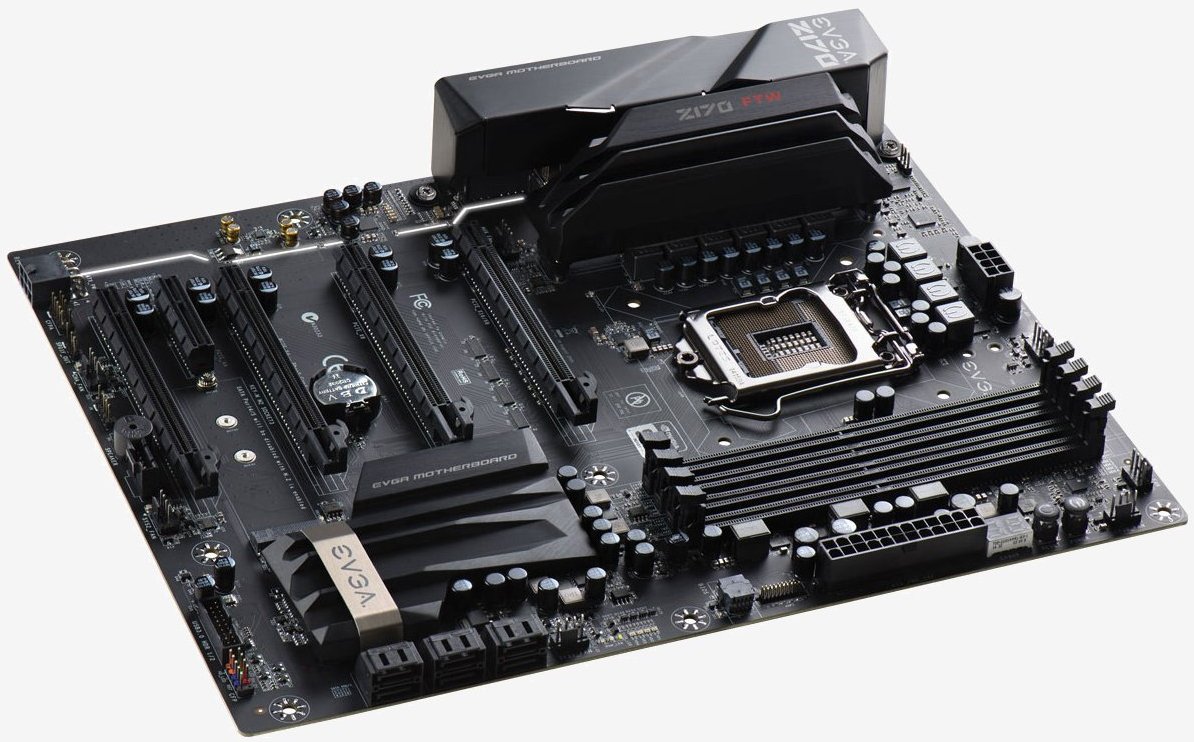EVGA Z170 FTW
The Z170 FTW is priced at $190, making it the most affordable Z170 motherboard in our roundup. It sports a mono-color design using a black PCB, black connectors and black heatsinks, while almost all the text is white. This isn't a very striking motherboard but it looks good nonetheless.
Last year when we reviewed the EVGA Z97 FTW the board was found to offer few features compared to the competition and was merely a clone of the Z87 FTW that came before it.
Thankfully the Z170 FTW is a little more impressive and finally users can install an M.2 SSD on a mid-range EVGA motherboard.
There are four full length PCIe x16 slots found on the Z170 FTW, the first is wired for full x16 bandwidth, the second x8, the third x4 and finally the last is wired for just x1 bandwidth. As is the case with most Z170 motherboards, 4-way multi-GPUs are not supported, while 3-way is limited to x8/x8/x4 and 2-way works in a x8/x8 configuration.
When it comes to storage, EVGA forgoes SATA Express support which isn't really an issue, though they have only included a single M.2 slot which is limited to support for 42, 60 and 80mm card lengths. The M.2 slot supports either SATA or native PCIe SSDs, though this means it is shared with the 4th and 5th SATA ports.
Speaking of SATA ports, just the standard six provided by the chipset are offered by the Z170 FTW which limits the maximum usable storage interfaces to just six.
As with most of the motherboards in our roundup, the Z170 FTW uses the Realtek ALC1150 codec, though unlike most manufacturers EVGA hasn't created a fancy audio package for the marketing team to get all excited about.
Onboard there are a few Nichicon audio capacitors and an amplifier labelled 'AIG BDH' that we couldn't find much about.
Networking is limited to a single wired solution as the Z170 FTW employs the Intel I219V, the same single Gigabit chip used by the Supermicro MBD-C7Z170-SQ and the Asus ROG Maximus VIII Hero.
In total there are eight USB 3.0 ports and six of them are found conveniently on the I/O panel, while an additional two can be accessed via an on-board header. Sadly USB 3.1 is missing from the board, which is a shame as there are more affordable Z170 motherboards available sporting multiple USB 3.1 ports.
Around at the I/O panel there are two USB 2.0 ports, six USB 3.0 ports, a Gigabit LAN port, BIOS reset button, DisplayPort, HDMI output, five audio jacks and an optical output.
EVGA does offer a small Windows-based utility called 'E-LEET Tuning Utility' and this allows users to monitor system vitals and do some basic overclocking within Windows. Think of E-LEET as an advanced version of CPU-Z. Unfortunately, the voltage options weren't working in the latest version, so hopefully this is something EVGA addresses in the near future.
As for the board's UEFI BIOS, it works quite well. It looks good and more importantly is easy to navigate. All the required overclocking related options come under the one heading which has been appropriately labeled "Overclock".
Overall, the EVGA Z170 FTW is an aggressive looking Z170 motherboard that is ultimately light on features.



